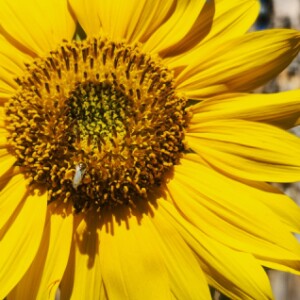Flower Friday
...in the bosque (it rhymes with day, boskay, for those who wonder). One of my favorite times of the year to be cycling through the riverside forest...the NM sunflowers blooming in mid to late August.
~ Our first of the year volunteer. Note the yellow pollen on the bee's corbiculae.
How Wild Bees Carry Pollen
POLLINATION
Pollination occurs when a bee carries pollen from the anther of a flower to the stigma of a flower. Bees do not intentionally carry out pollination; it is the unintended result of the bee’s travels. Pollen clings to the branched and sticky hairs of the bee's body, and is rubbed off as the bee walks or flies from one blossom to another.
Bees carry pollen in order to transport it back to their nests. Pollen is stored in various forms, usually for feeding to the bees' young after they hatch. In most wild bee species, the females are responsible for carrying and storing pollen. Males of many species drink nectar from flowers, but lack attributes that allow them to transport pollen efficiently.
IDENTIFYING BEES BY HOW THEY POLLINATE
Female bees of varying species have evolved singular methods of transporting pollen. Female honey bees and bumble bees, for example, carry pollen in baskets called corbiculae. A corbicula is made up of hairs blended together to form a concave shape.
Most wild bees lack pollen baskets. Instead, many wild female bees have specialized leg hairs called scopae that are particularly long or sticky. Often, the hairs on bees' legs, bodies and faces have a slight electrostatic positive charge; negatively-charged pollen is thus attracted to the hairs.


Comments
Sign in or get an account to comment.


